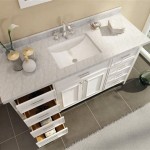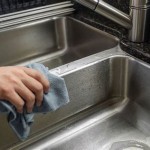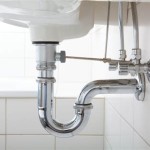Tiny Flies in Bathroom Sink
The presence of small flies in the bathroom sink can be a nuisance and often indicates an underlying sanitation issue. These flies, typically drain flies (Psychodidae), moth flies, or fungus gnats, thrive in moist, unsanitary environments and are attracted to decaying organic matter. Understanding their lifecycle and habits is key to effective elimination and prevention.
Identifying the Source
The first step in dealing with tiny flies in the bathroom sink is identifying their breeding ground. Drain flies, the most common culprit, breed in the thin film of organic matter that accumulates inside drains. This biofilm provides a perfect environment for larvae to develop. Other potential breeding sites include areas around the sink's base, leaky pipes, and accumulated standing water. A thorough inspection of these areas is crucial for effective control.
Understanding the Drain Fly Lifecycle
Drain flies undergo complete metamorphosis, progressing through egg, larval, pupal, and adult stages. Female flies lay eggs in the organic film within drains. These eggs hatch into larvae that feed on the decaying matter. The larval stage can last from 9 to 15 days. Pupation then occurs, typically lasting 20-40 hours, before adult flies emerge. Understanding this lifecycle is crucial for targeting control measures at the most vulnerable stages.
Effective Removal Methods
Several methods can be employed to eliminate drain flies and other small flies infesting bathroom sinks. Mechanical removal, such as using a drain brush or pipe cleaner to physically scrub away the biofilm, can be effective in removing larvae and eggs. This should be followed by flushing the drain with hot water.
Chemical drain cleaners can also be used, but should be chosen carefully. Some chemical cleaners are more effective at breaking down organic matter than others. Always follow manufacturer instructions and ensure adequate ventilation when using chemical cleaners. Natural solutions, such as baking soda and vinegar, can also be effective. Pouring a mixture of baking soda and vinegar down the drain can help to break down the organic matter and kill larvae.
Preventing Future Infestations
Prevention is key to maintaining a fly-free bathroom sink. Regular cleaning of the sink and drain area is paramount. This includes wiping down surfaces to remove any organic debris and using a drain brush to prevent biofilm accumulation. Ensuring proper drainage can also help to minimize standing water, which can attract flies. Repairing any leaks in pipes or around the sink can eliminate potential breeding sites.
Alternative Breeding Sites
While the drain is the most common breeding site, it's important to consider other potential locations. Overflowing garbage disposals, damp sponges or cleaning cloths left near the sink, and even small spills of sugary liquids can attract and support the development of these flies. Maintaining a clean and dry environment around the sink is essential for preventing infestations.
Identifying Other Small Flies
While drain flies are the most common, other small flies might be present. Moth flies (Psychodidae), similar in appearance to drain flies, can also be found in bathrooms. They tend to breed in moist areas, such as leaking pipes or damp walls. Fungus gnats (Sciaridae) are another possibility, typically attracted to overwatered houseplants or damp potting soil. Correctly identifying the type of fly can help in targeting specific control measures.
Professional Pest Control
If the infestation persists despite implementing these measures, contacting a professional pest control service may be necessary. Pest control professionals have the expertise and tools to identify the source of the infestation and implement effective control strategies. They can also provide advice on preventative measures to avoid future problems.
Maintaining Bathroom Hygiene
Maintaining good hygiene practices is the cornerstone of preventing fly infestations in the bathroom. This includes regular cleaning of the sink, countertops, and surrounding areas. Proper ventilation is also important to reduce moisture buildup, which can attract flies. Ensuring that any spills are cleaned up promptly and that all potential breeding sites are eliminated is crucial for long-term fly control.
5 Easy Ways To Get Rid Of Drain Flies Fast
How To Get Rid Of Drain Flies Moth And Prevent An Infestation Pest Defence
Jab Plumbing Solutions Blog Blocked Drain Plumbers
Are These Drain Flies Coming Out Of My Bathroom Drains
How To Rid Of Drain Flies Forbes Home
What Are Those Little Dark Colored Flies That Come Out Of My Bathroom Sink Uf Ifas Entomology And Nematology Department
How To Get Rid Of Drain Flies
How To Get Rid Of Gnats Drain Flies Fruit And Fungus
Fruit Flies In The Bathroom Get Rid Of Them Michael S Plumbing Orlando
Identify Tiny Bugs In Bathroom And Get Rid Of Them For Good







